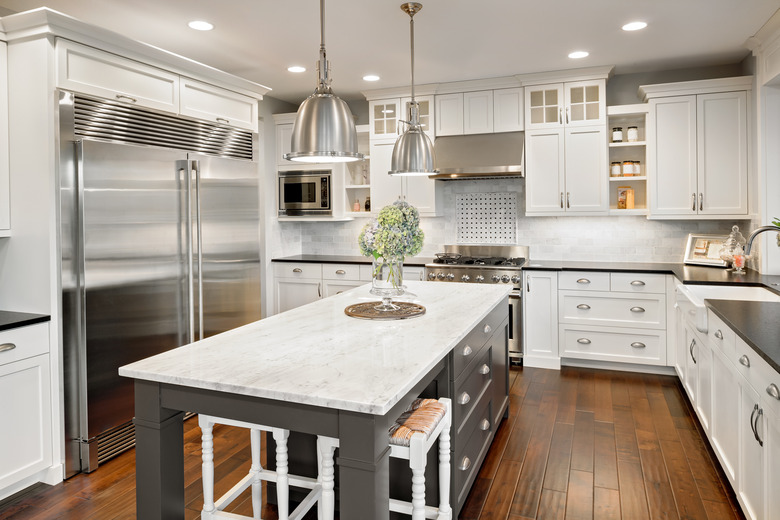How Can I Make Fluorescent Lighting Warmer?
Fluorescent lighting beats incandescent bulbs in energy efficiency by far, with compact fluorescent lamps (CFLs) using 75% less energy than regular bulbs, according to ENERGY STAR. But the quality of the light emitted by tube fixtures and CFLs is very poor. Florescent lighting produces a rather cold and often blue-tinged fluorescent light color that can be psychologically depressing and unflattering to skin tones, and ruins color schemes. There are several quick and easy ways you can correct these effects if replacing florescent fixtures isn't possible.
Choose Warmer Lamps
Choose Warmer Lamps
Both florescent tubes and CFL lamps are often available in several different color temperatures. The bluest lamps are often labeled as cool. Lamps with warmer light output will be labeled as warm. You can sometimes purchase florescent tubes and CFLs that impart a distinct pink tone to the light. These are particularly flattering to skin tones when used in bathrooms.
Some florescent tubes come in natural or full spectrum colors. These lamps will have labeling that boasts of light that's similar to natural sunlight. While full-spectrum lamps are better than standard cool lamps, they still emit a light that's cold compared to typical warm sunlight. Full-spectrum light is actually whiter than golden sunlight and not as cheery as hoped. But full-spectrum lamps can help counteract the bad effect normal blue florescent lights have on colors in a room.
Modify with Gel Media Sheets
Modify with Gel Media Sheets
If you can't find a suitable florescent lamp, modify the light coming from a covered tube fixture with a trick used by theatrical lighting designers. Simply insert gel media sheets inside the fixture cover lens. Gel media is a paper-thin plastic product impregnated with color, available in hundreds of colors and textures. An amber or sunny yellow color can create the warmth you want.
Manufacturers of gel media post examples of their gel colors online. You can also test gel colors yourself with a sample swatch book. Order gel online or ask a local theater group to sell you a few sheets. Gel media used as florescent light filters should last indefinitely.
You can also create a rice paper fluorescent light cover to help soften the light from the fluorescent lamps. The rice paper lets light pass throughly easily, but it reduces the glare and the harsheness that often comes from fluorescent lights.
Pattern of the Lens
Pattern of the Lens
One of the least attractive aspects of florescent tube fixtures like those found in institutional settings is that dull glowing rectangle the lights form against the ceiling. They have an institutional feel and can create a dreary mood in the room. This too can be quickly modified to create a more stylish look, even if the bulb color temperature remains cold. Use sheets of 1/4-inch thick black foam core poster board or two layers of standard black poster board to create a lens mask.
Cut the black foam core slightly smaller than the fixture lens cover. Cut out geometric shapes from the poster board, and slide this mask into the fixture between the tubes and the plastic lens cover. The mask will reduce the amount of light, and the cut-out shapes will glow. Experiment with how much you want to reduce the light with different sizes and numbers of cut-out shapes. Add a layer of gel media to further boost the warmth factor.
